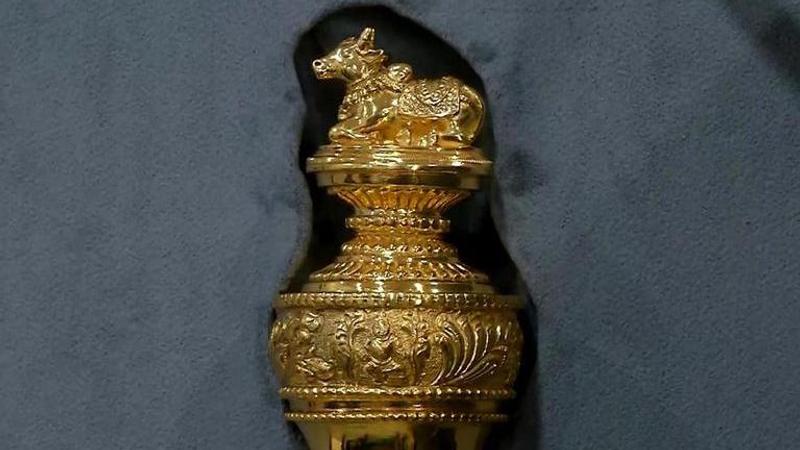Published 00:23 IST, May 25th 2023
Vummidi Bangaru Jewellers: The Family which brought 'Sengol' sceptre back into existence
The Vummidi Bangaru Jewellers is the family which was tasked with the making of the 'Sengol' Sceptre in 1947 to revere the tradition of Chola Empire.

At Vummidi Bangaru Jewellers in Chennai, there’s a replica of the famous sceptre "Sengol," which was given as a sign of the handover of authority from the British to India in 1947. It was used by former Prime Minister Jawaharlal Nehru on August 14, 1947, when the British monarchy was ousted from India. The 'Sengol' was created in 1947 in what was then Madras by a jeweller, Vummidi Bangaru Chetty, under the guidance of the seer of Thiruvaduthurai Atheenam, a mutt in Tamil Nadu, ANI reported.
The Vummidi Bangaru Jewellers is the family which was tasked with the making of the 'Sengol' sceptre to revere the tradition of Chola Empire.
During the Chola dynasty era, the "Sengol" symbolised the custom of handing over sovereignty to new rulers. A "Nandi" and a carving of the goddess Lakshmi, representing wealth and prosperity, are on top of the sceptre. Jithendra Vummidi, the great-grandson of Vummidi Bangaru Chetty, who created the "Sengol" in 1947, said that the "Sengol" was blessed with prayers, and given to British Viceroy Lord Mountbatten at the time and subsequently handed over to Pt. Nehru.
(Jithendra Vummidi, the great-grandson of the jeweller Vummidi Bangaru Chetty)
The word "Sengol" is common in Tamil Nadu. According to Amarendra Vummidi, the other great-grandson of jeweller Vummidi Bangaru Chetty, said its original design was handed to my great-grandfather and grandfather by the seer of Thiruvaduthurai Atheenam to be manufactured and delivered to Pandit Jawaharlal Nehru.
Amit Shah's announcement
On Wednesday, Home Minister Amit Shah made a significant announcement, stating that a priceless aspect of India's long-standing history would be incorporated into the new Parliament during the inauguration event on May 28.
“The historic sceptre, 'Sengol', will be placed in the new Parliament building. It was used on August 14, 1947, by PM Nehru when the transfer of power took place from the British. It is called Sengol in Tamil, and the meaning of this word is full of wealth," Shah stated.
Brief history of 'Sengol'
Sengol, an adorned rod or staff, is wielded by rulers during formal occasions as a symbol of their authority and sovereignty. It is named 'Sengol' in Tamil, which means "full of wealth".
According to S Gurumurthy, on August 14, 1947, a solemn and revered Tamil tradition known as the Sengol (Dharma Danda) vesting ceremony marked the transition of power from British Viceroy Lord Mountbatten to Indian Prime Minister Pandit Nehru. The ceremony included the recital of 11 verses from the Theveram text that invoked the blessings of Shiva for the ruler. It took place just before Pandit Nehru addressed the nation at midnight and hoisted the national flag.
The Chola Empire custom of installing a new ruler involves Rajaguru vesting the Sengol in their hands.
(Image depicting handing over of Sengol (Dharam Danda) to the ruler)
The ceremony was conducted by a traditional Tamil Shaiva Adheenam (Mutt), who placed the Sengol in Pundit Nehru's hands. Ancient Tamil scriptures frequently mention the Sengol, which stands for ethical governance. Saint-poet Tiruvalluvar has penned 10 verses honouring the Sengol and "Songonmai," which implies rule based on "Aram", the Tamil term for Dharma.
Updated 00:23 IST, May 25th 2023






